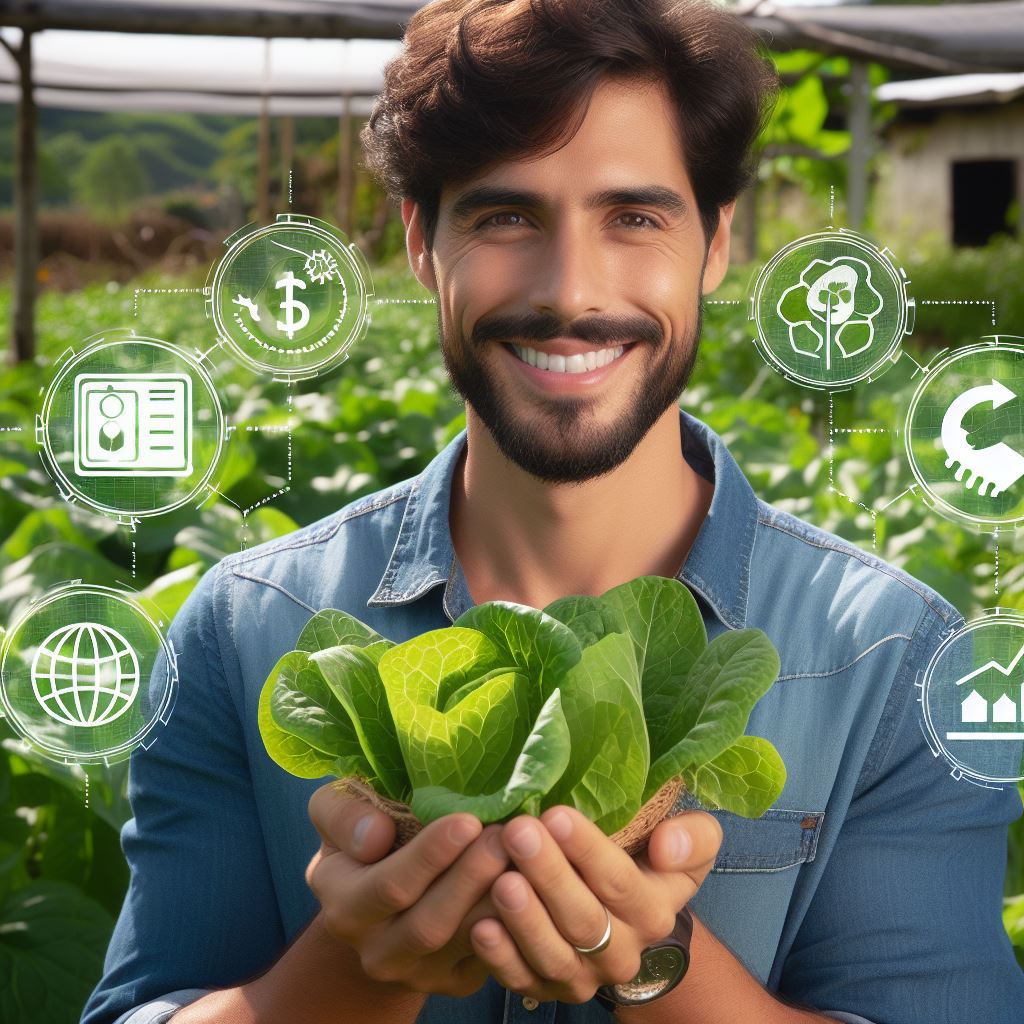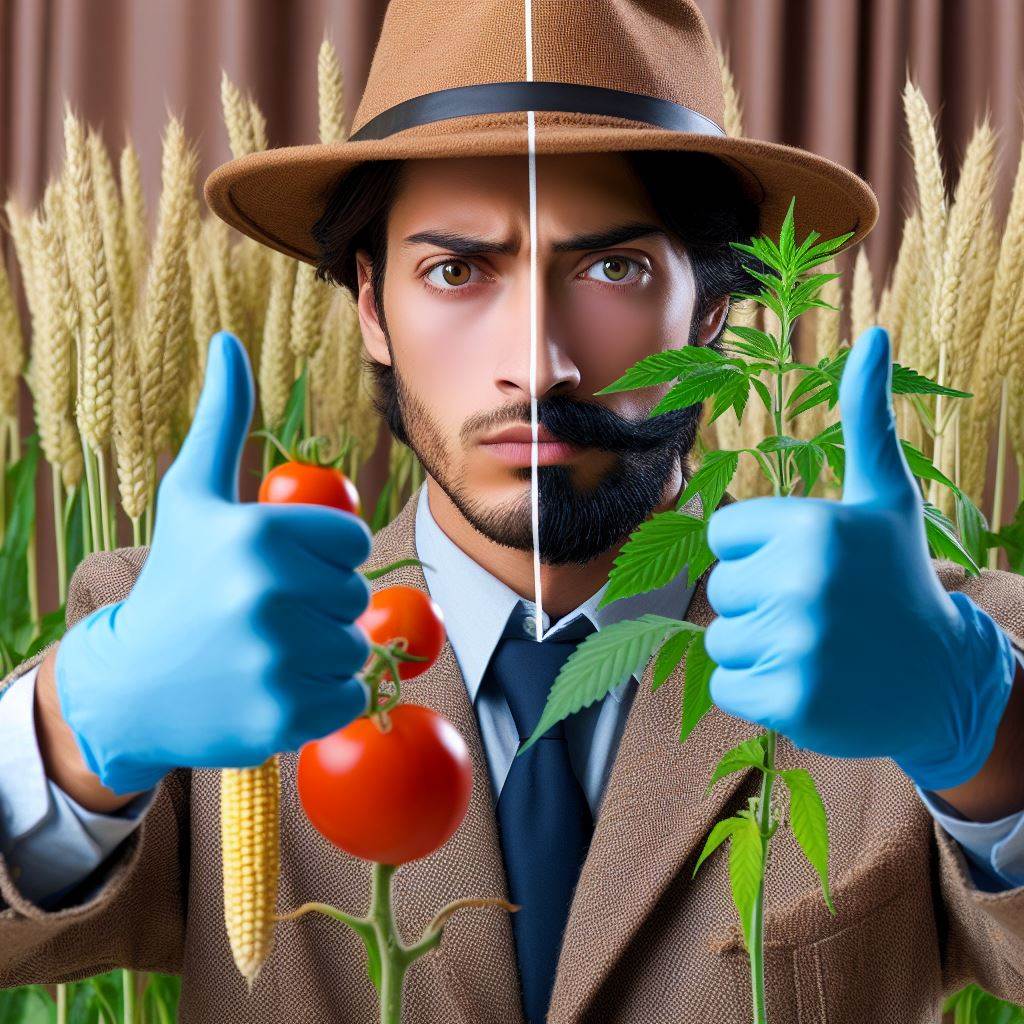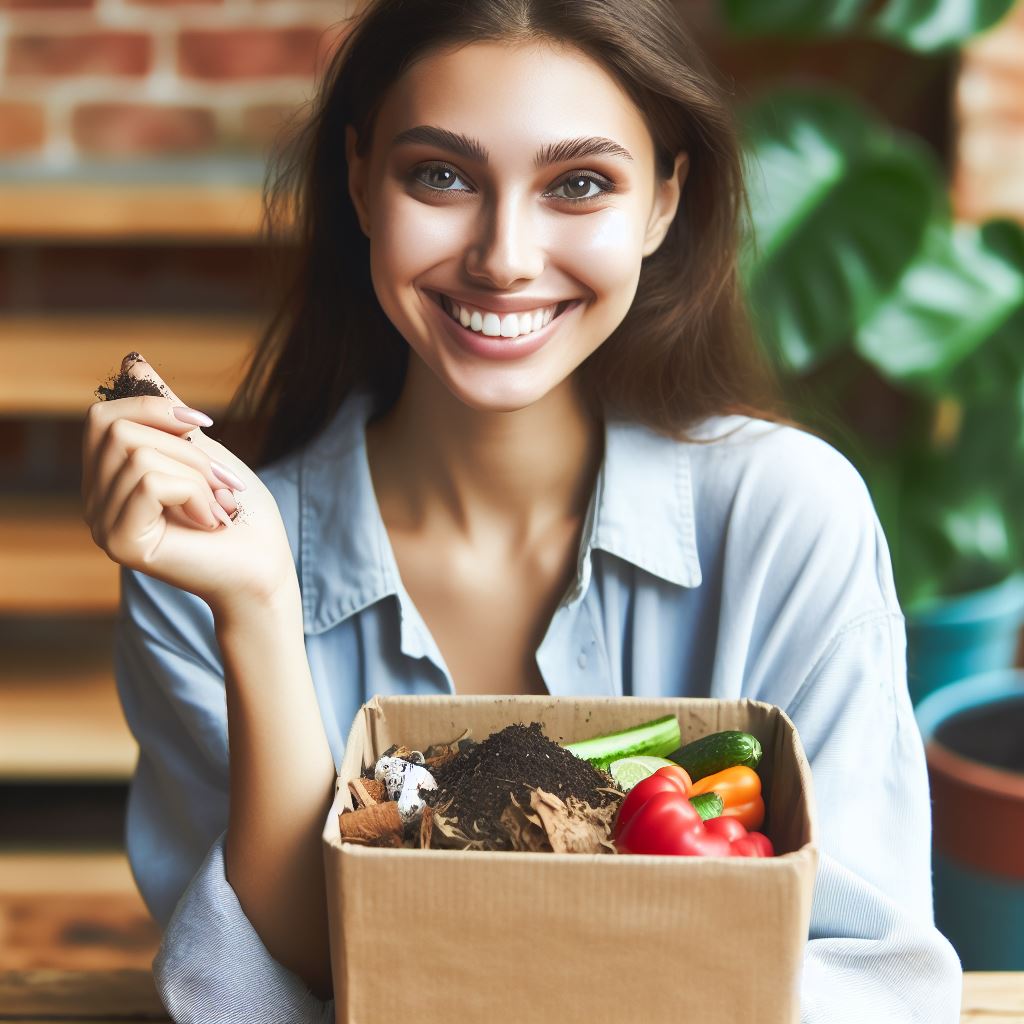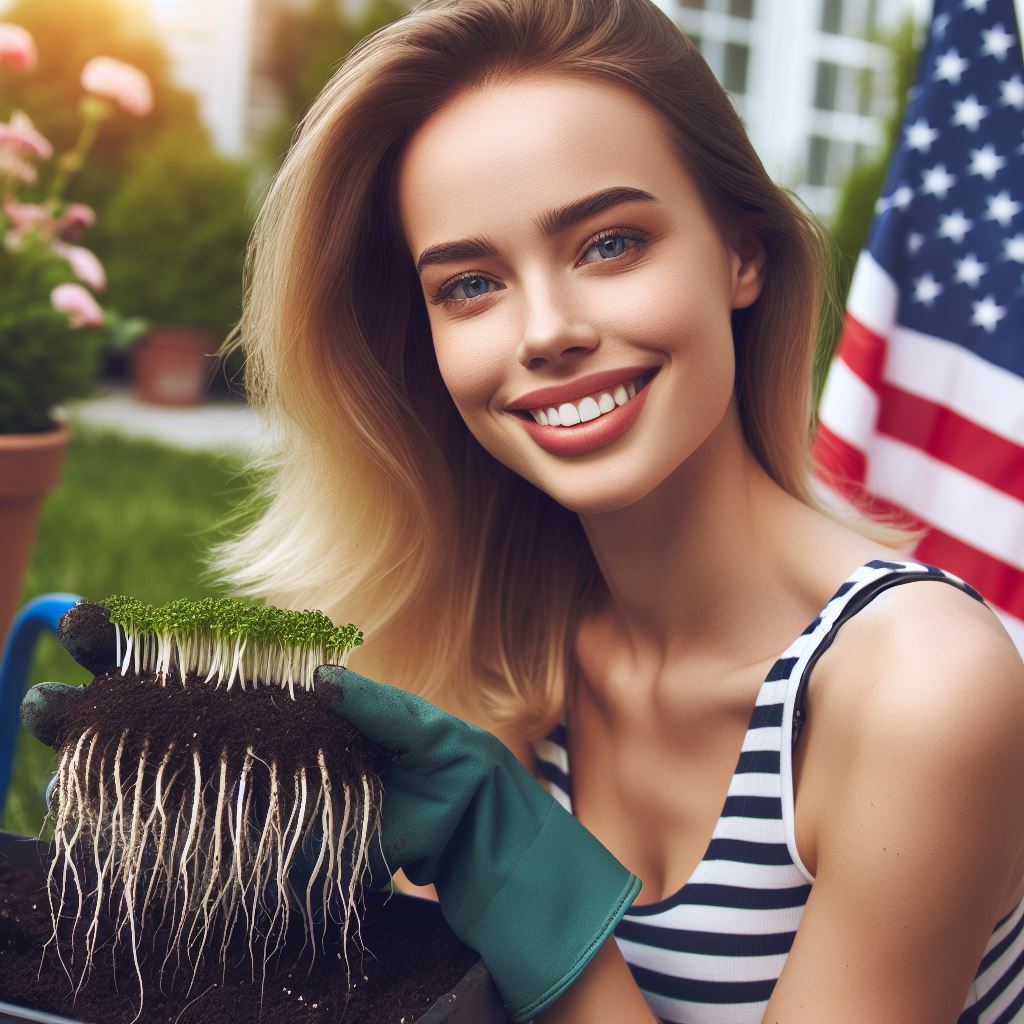Introduction
Definition of container gardening
Container gardening entails cultivating plants in pots, baskets, or other vessels instead of directly in the ground.
Importance of choosing the right plants
Container gardening success hinges on selecting plants tailored to this unique environment.
- Choose plants suited to containers: Opt for varieties that thrive in confined spaces and adapt well to container living.
- Consider plant characteristics: Evaluate factors such as size, growth habit, and sunlight requirements to ensure compatibility with containers.
- Ensure proper soil and drainage: Select high-quality potting mix and containers with adequate drainage to promote healthy root development.
By carefully selecting plants and providing optimal growing conditions, container gardening enthusiasts can transform any space into a lush oasis.
Whether you have a small balcony, patio, or windowsill, container gardening offers endless possibilities for adding beauty and greenery to your surroundings.
With the right plants and proper care, you can create stunning container gardens that bring joy and vitality to your home or outdoor space.
Considerations for Container Gardening
Container gardening is a popular choice for both beginners and experienced gardeners.
It offers the opportunity to enjoy gardening in limited spaces, such as balconies, patios, or small yards.
However, to ensure successful container gardening, certain considerations need to be taken into account.
Size and type of containers
Choosing the right size container is crucial for the health and growth of the plants.
Different plants have varying root systems, and their containers should accommodate their needs.
Shallow-rooted plants like lettuce can thrive in smaller containers, while deep-rooted plants like tomatoes require larger ones.
Additionally, consider the type of container that suits your preference and the style of your garden.
Clay pots are aesthetically pleasing but can dry out quickly, while plastic containers retain moisture but may not provide sufficient insulation for the roots.
Wooden boxes provide good insulation but may rot over time.
Moreover, ensure that the containers have appropriate drainage holes to prevent waterlogging, which can lead to root rot.
Transform Your Agribusiness
Unlock your farm's potential with expert advice tailored to your needs. Get actionable steps that drive real results.
Get StartedSoil selection and preparation
Selecting the right soil mix is essential for container gardening.
Using a high-quality potting mix provides the necessary nutrients, good drainage, and moisture retention.
Such mixes typically consist of a combination of peat moss, vermiculite, and compost.
It is also beneficial to enrich the soil by adding organic matter, such as compost or peat moss, which improves soil fertility.
Avoid using garden soil in containers as it tends to be heavy, may not drain well, and often lacks the necessary nutrients for optimal plant growth.
Sunlight and location requirements
Understanding the sunlight requirements of the plants you intend to grow is vital for their survival and productivity.
Some plants thrive in full sun, while others prefer partial shade.
Before selecting the location for your containers, consider the amount of sunlight the area receives throughout the day.
Observe shading patterns caused by nearby trees, buildings, or other structures that may limit sunlight exposure.
Monitoring the sunlight hours in your chosen location for a few days will help you determine if it meets the requirements of your selected plants.
Therefore, successful container gardening relies on careful consideration of various factors.
Selecting the appropriate container size and type, using the right soil mix, and ensuring adequate sunlight exposure are essential for the health and productivity of your plants.
By following these considerations, you can create a thriving container garden that brings beauty and bounty to even the smallest spaces.
Read: Winter Gardening: Protect Your Plants
Plants That Thrive in Container Gardens
Container gardening offers a convenient and flexible way to cultivate plants in limited spaces.
Whether you have a small balcony, patio, or even a windowsill, there are numerous plants that thrive in containers and can enhance your outdoor or indoor space.
Herbs
- Basil is an excellent choice for beginners in container gardening. Its aromatic leaves and versatile usage in various cuisines make it a favorite among gardeners. With regular watering and well-drained soil, basil plants can grow vigorously and provide a steady supply of fresh herbs throughout the season.
- Mint, known for its refreshing flavor, adapts well to container growing. Choose a sturdy container, as mint plants tend to spread. Regular harvesting promotes bushier growth. Mint thrives in partial shade and requires consistent moisture to prevent it from drying out.
- Rosemary, a hardy herb native to the Mediterranean, is an ideal candidate for container gardening. It thrives in well-drained soil and requires full sun. Rosemary’s woody stems and aromatic leaves make it a perfect addition to roasted vegetables, meats, and marinades.
Vegetables
- Tomatoes are one of the most popular vegetables grown in containers. Opt for compact varieties, such as cherry or patio tomatoes, for better accommodation within limited spaces. Provide support, such as stakes or cages, to ensure proper growth and prevent sprawling.
- Peppers, whether you prefer hot or sweet varieties, can flourish in containers with adequate sunlight and warmth. Choose dwarf or compact varieties suited for container growth. Regular feeding with a balanced liquid fertilizer promotes healthy fruit production.
- Lettuce, a staple in salads and sandwiches, can be grown in containers throughout the year. Select loose-leaf lettuce varieties for easier harvesting. Keep the soil evenly moist and provide partial shade during hot summer months to prevent bolting (premature flowering).
Flowers
- Marigolds are beautiful and practical additions to container gardens. Their bright colors, ranging from yellow to orange, attract pollinators while repelling aphids and other garden pests. Marigolds prefer full sun and moderately fertile soil.
- Petunias, available in a wide range of colors and patterns, can transform container gardens into vibrant showcases. These annual flowers require regular watering, as they can quickly dry out. Deadhead spent blooms to encourage continuous flowering.
- Geraniums, with their stunning flowers and unique fragrances, are popular choices for container gardens. They prefer well-drained soil and full sun. Geraniums are low maintenance, but regular deadheading and occasional fertilizing can enhance their blooming potential.
By selecting the right plants for your container garden, you can create a vibrant and thriving oasis even in limited spaces.
Experiment with different combinations, ensure proper care, and enjoy the beauty and flavors these plants bring to your home.
Happy gardening!
Read: The Art of Layering in Compost Making
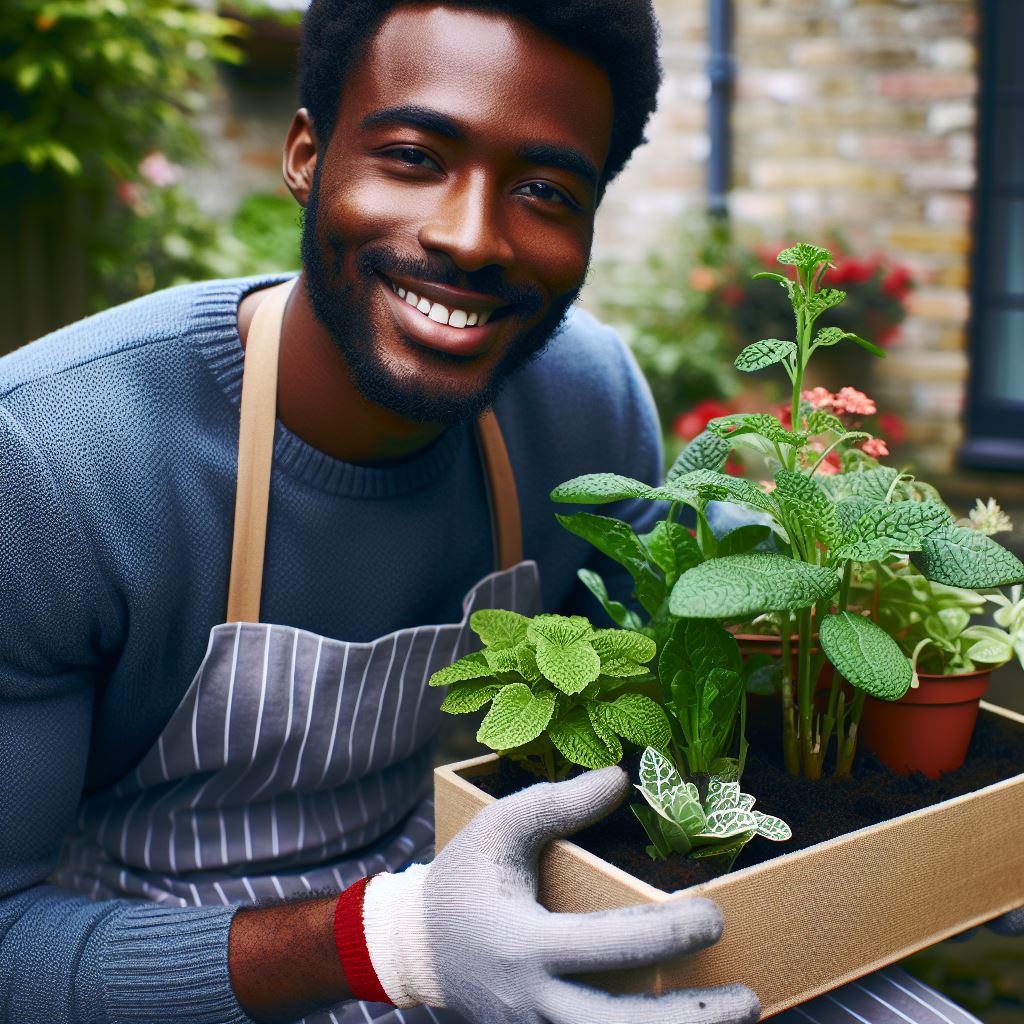
Best Practices for Planting and Growing
Proper spacing for plants in containers
In container gardening, proper spacing is crucial for the health and vitality of the plants.
When plants are too close together, they compete for resources such as nutrients, water, and sunlight.
This can lead to stunted growth, increased susceptibility to diseases, and reduced yields.
Therefore, it is essential to follow proper spacing guidelines.
Showcase Your Farming Business
Publish your professional farming services profile on our blog for a one-time fee of $200 and reach a dedicated audience of farmers and agribusiness owners.
Publish Your ProfileSuitable watering techniques
Watering is another critical aspect of container gardening.
The frequency and amount of water needed may vary depending on the plant and environmental conditions.
It is important to water plants thoroughly, ensuring that the water reaches the roots.
However, it is equally important to avoid overwatering, as it can lead to root rot and drown the plants.
To determine when to water, check the moisture level in the soil regularly. If it feels dry, it’s time to water.
Fertilization and nutrient requirements
Fertilization is essential to replenish the nutrients that container plants quickly deplete.
A high-quality potting mix enriched with nutrients is a good starting point.
Additionally, incorporating slow-release fertilizers during planting provides a continuous supply of nutrients.
Liquid fertilizers specifically formulated for container gardening can be applied regularly to ensure the plants receive all the necessary nutrients.
Pruning and maintenance tips
Taking care of the plants’ physical appearance also plays a role in their health.
Regular pruning and maintenance are necessary to remove damaged or dead plant parts, which can attract pests and diseases.
Pinching off the tips of certain plants helps promote bushier growth, especially with herbs like basil or mint.
Cutting back leggy or overgrown plants helps maintain their shape and encourages new growth.
By following these best practices for planting and growing in containers, you can ensure that your plants thrive in their confined environment.
Proper spacing, suitable watering techniques, fertilization, and regular maintenance will contribute to healthy growth, vibrant blooms, and bountiful harvests.
Container gardening allows you to enjoy gardening in limited spaces, and with these practices, you can make the most of it.
Read: Balcony Farming: Tips for City Dwellers
Container Gardening Tips and Tricks
Choosing plants that complement each other
Container gardening offers a wide range of possibilities for growing plants.
When choosing plants, it is important to consider their compatibility with each other.
- Plant with similar care needs: Select plants that have similar light, water, and nutrient requirements. This ensures that all plants thrive together in the same container.
- Consider growth habits: Combine plants with contrasting growth habits to create visual interest in your container garden. Pair tall plants with cascading or trailing ones for a dynamic look.
- Flower and foliage combinations: Experiment with different combinations of flowers and foliage plants to add texture and color to your container. Opt for contrasting or complementary colors for a stunning display.
- Choose compatible root systems: Avoid combining plants with aggressive root systems that may overshadow or hinder the growth of other plants in the container.
Regular monitoring for pests and diseases
Container gardens are not immune to pests and diseases, so it’s crucial to keep an eye out for any signs of trouble.
- Inspect your plants: Regularly check your plants for any signs of pest infestation or disease. Look for chewed leaves, unusual spots or discoloration, wilting, or abnormal growth.
- Take immediate action: If you spot any issues, address them promptly. Isolate affected plants to prevent the spread of pests or diseases and treat accordingly using organic or chemical methods.
- Promote good airflow: Proper air circulation is essential to prevent the buildup of humidity, which can attract pests and promote disease. Avoid overcrowding plants in containers and provide adequate spacing.
- Regular cleaning: Clean your containers and gardening tools to remove any potential disease-causing pathogens. This simple step can go a long way in maintaining a healthy container garden.
Seasonal rotation and replanting
To keep your container garden thriving year-round, consider seasonal rotation and replanting.
- Assess seasonal needs: Determine which plants are suitable for each season. Some plants thrive in cool weather, while others prefer warmer temperatures.
- Rotate plant placement: Swap out plants when the season changes to ensure a continuous display of vibrant foliage and blooms. Remove plants that are no longer performing well.
- Refresh soil between seasons: Before replanting, refresh the soil by removing spent plants, loosening the soil, and adding organic matter to replenish nutrients.
- Consider indoor options: In colder climates, bring container plants indoors during winter to protect them from frost and extend their lifespan.
Creative and practical container choices
Choosing the right containers can enhance the visual appeal and functionality of your container garden.
- Think beyond traditional pots: Get creative with your container choices. Consider using repurposed items like buckets, barrels, or even old watering cans as unique planters.
- Ensure proper drainage: Regardless of the container you choose, ensure it has drainage holes to prevent waterlogged roots. Alternatively, use stones or broken pottery to create a layer at the bottom for drainage.
- Size matters: Select containers that provide enough space for plants to grow and develop their root systems. Avoid overcrowding by choosing appropriately sized containers.
- Mobility: If you have limited space or want the flexibility to move your plants around, opt for containers with wheels or lightweight materials for easy transport.
Container gardening offers endless possibilities for creating a vibrant and beautiful garden.
By carefully choosing plant combinations, regularly monitoring for pests and diseases, practicing seasonal rotation and replanting, and making creative container choices, you can create a thriving and visually appealing container garden.
Read: Vertical Gardening: Grow Up, Not Out
Success Stories and Case Studies
Profiles of successful container gardeners
Emily: A Beginner’s Triumph
- Emily was a novice gardener who successfully created a thriving container garden.
- She carefully chose plants suitable for containers, ensuring they received adequate sunlight and water.
- Emily maintained a consistent watering and fertilizing schedule, which led to healthy plants and abundant harvests.
- Her dedication and passion for gardening paid off, inspiring other beginners to try container gardening.
Michael: Overcoming Challenges
- Michael faced various challenges while maintaining his container garden, but he persevered.
- He adapted to limited space by using vertical gardening techniques, utilizing hanging baskets and trellises.
- Michael experimented with different plant combinations, discovering which ones thrived together and complemented each other’s growth.
- Despite facing setbacks like pests and extreme weather conditions, Michael’s perseverance resulted in a beautiful and productive garden.
Lessons learned from experienced container gardeners
Start with the right container
- Choose containers with adequate drainage holes to prevent waterlogging and root rot.
- Consider the size of the container, ensuring it provides enough space for the plant’s roots to grow.
- Look for containers made of durable materials that can withstand varying weather conditions.
Select suitable plants
- Research and choose plants that are well-suited for container gardening, taking into account their sunlight and water requirements.
- Consider the height and growth habits of plants to ensure they won’t overcrowd the container as they mature.
- Combining plants with varying textures and colors can create an aesthetically pleasing container garden.
Provide proper care and maintenance
- Ensure containers receive adequate sunlight, placing them in locations with at least six hours of direct sunlight daily.
- Water plants regularly, allowing the soil to dry slightly between each watering session.
- Apply an appropriate fertilizer, following the instructions on the packaging to avoid overfertilization.
Monitor pests and diseases
- Regularly inspect plants for signs of pests, such as aphids, snails, or spider mites, and take prompt action to control them.
- Prevent diseases by providing proper air circulation and avoiding overwatering, as damp conditions can promote fungal growth.
- Research organic pest control methods to minimize the use of chemicals and maintain a healthy environment for plants.
Adapt to challenges and learn from failures
- Container gardening involves trial and error, so don’t be discouraged by initial failures.
- Learn from mistakes by identifying what went wrong and making adjustments for future plantings.
- Stay patient and embrace the learning process, as each gardening experience contributes to becoming a more skilled gardener.
In short, container gardening success stories and case studies offer invaluable insights for both novice and experienced gardeners.
Profiles of successful container gardeners like Emily and Michael demonstrate the rewards of dedication and perseverance.
Learning from their experiences and implementing lessons such as choosing the right container, selecting suitable plants, providing proper care, monitoring pests, and adapting to challenges can help anyone thrive in container gardening.
So, get inspired, put those green thumbs to work, and create your own success story in the world of container gardening.
Conclusion
Recap of the importance
Choosing the right plants is paramount for thriving container gardens.
Consider size, sunlight, and drainage.
Encouragement for readers
Now is the time to start your container garden.
Embrace the journey and watch your space flourish with life.
Selecting suitable plants for containers ensures they thrive in confined spaces, enhancing your gardening experience.
Factors such as size, growth habit, and sunlight requirements play pivotal roles in plant selection.
Adequate drainage and quality soil are essential for healthy root development and overall plant vitality.
To readers passionate about gardening or eager to start, container gardening offers endless possibilities.
Begin your journey today, whether you have a spacious patio or a compact balcony.
Transform your space into a vibrant oasis with carefully chosen plants, bringing beauty and joy into your surroundings.
Let your container garden be a reflection of your creativity and love for nature.
Showcase Your Farming Business
Publish your professional farming services profile on our blog for a one-time fee of $200 and reach a dedicated audience of farmers and agribusiness owners.
Publish Your ProfileDive in, experiment, and relish the rewarding experience of nurturing plants in containers, enriching your life and environment.

